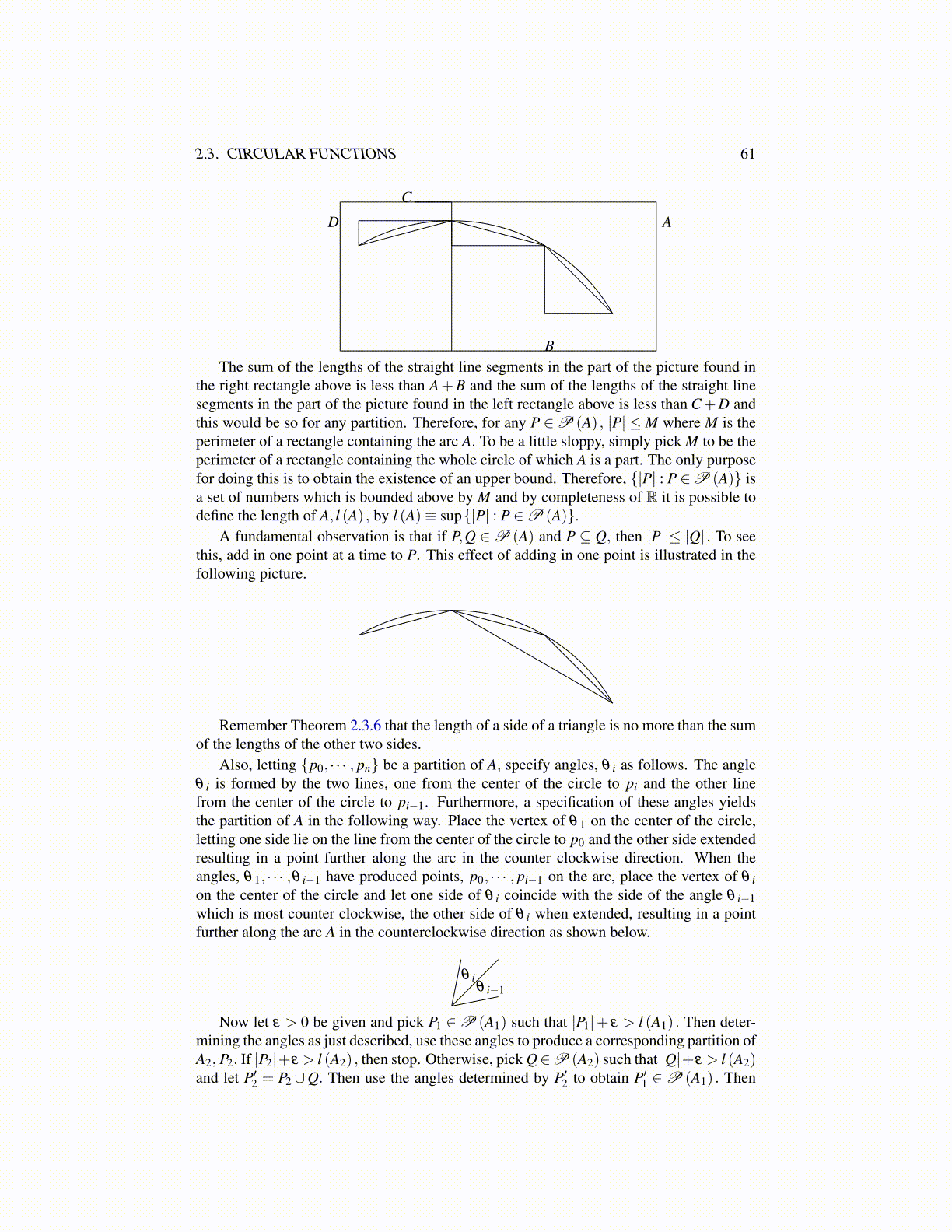
2.3. CIRCULAR FUNCTIONS 61
A
B
C
D
The sum of the lengths of the straight line segments in the part of the picture found inthe right rectangle above is less than A+B and the sum of the lengths of the straight linesegments in the part of the picture found in the left rectangle above is less than C+D andthis would be so for any partition. Therefore, for any P ∈ P (A) , |P| ≤ M where M is theperimeter of a rectangle containing the arc A. To be a little sloppy, simply pick M to be theperimeter of a rectangle containing the whole circle of which A is a part. The only purposefor doing this is to obtain the existence of an upper bound. Therefore, {|P| : P ∈ P (A)} isa set of numbers which is bounded above by M and by completeness of R it is possible todefine the length of A, l (A) , by l (A)≡ sup{|P| : P ∈ P (A)}.
A fundamental observation is that if P,Q ∈ P (A) and P ⊆ Q, then |P| ≤ |Q| . To seethis, add in one point at a time to P. This effect of adding in one point is illustrated in thefollowing picture.
Remember Theorem 2.3.6 that the length of a side of a triangle is no more than the sumof the lengths of the other two sides.
Also, letting {p0, · · · , pn} be a partition of A, specify angles, θ i as follows. The angleθ i is formed by the two lines, one from the center of the circle to pi and the other linefrom the center of the circle to pi−1. Furthermore, a specification of these angles yieldsthe partition of A in the following way. Place the vertex of θ 1 on the center of the circle,letting one side lie on the line from the center of the circle to p0 and the other side extendedresulting in a point further along the arc in the counter clockwise direction. When theangles, θ 1, · · · ,θ i−1 have produced points, p0, · · · , pi−1 on the arc, place the vertex of θ ion the center of the circle and let one side of θ i coincide with the side of the angle θ i−1which is most counter clockwise, the other side of θ i when extended, resulting in a pointfurther along the arc A in the counterclockwise direction as shown below.
θ i−1θ i
Now let ε > 0 be given and pick P1 ∈ P (A1) such that |P1|+ ε > l (A1) . Then deter-mining the angles as just described, use these angles to produce a corresponding partition ofA2, P2. If |P2|+ε > l (A2) , then stop. Otherwise, pick Q∈P (A2) such that |Q|+ε > l (A2)and let P′
2 = P2 ∪Q. Then use the angles determined by P′2 to obtain P′
1 ∈ P (A1) . Then